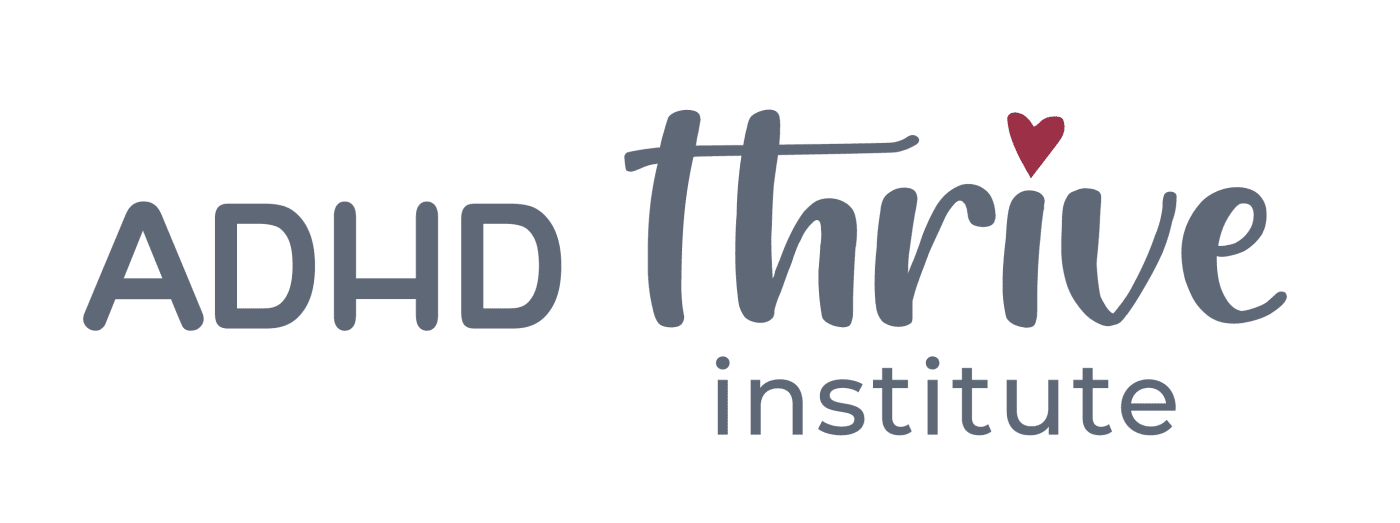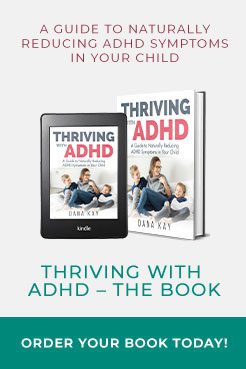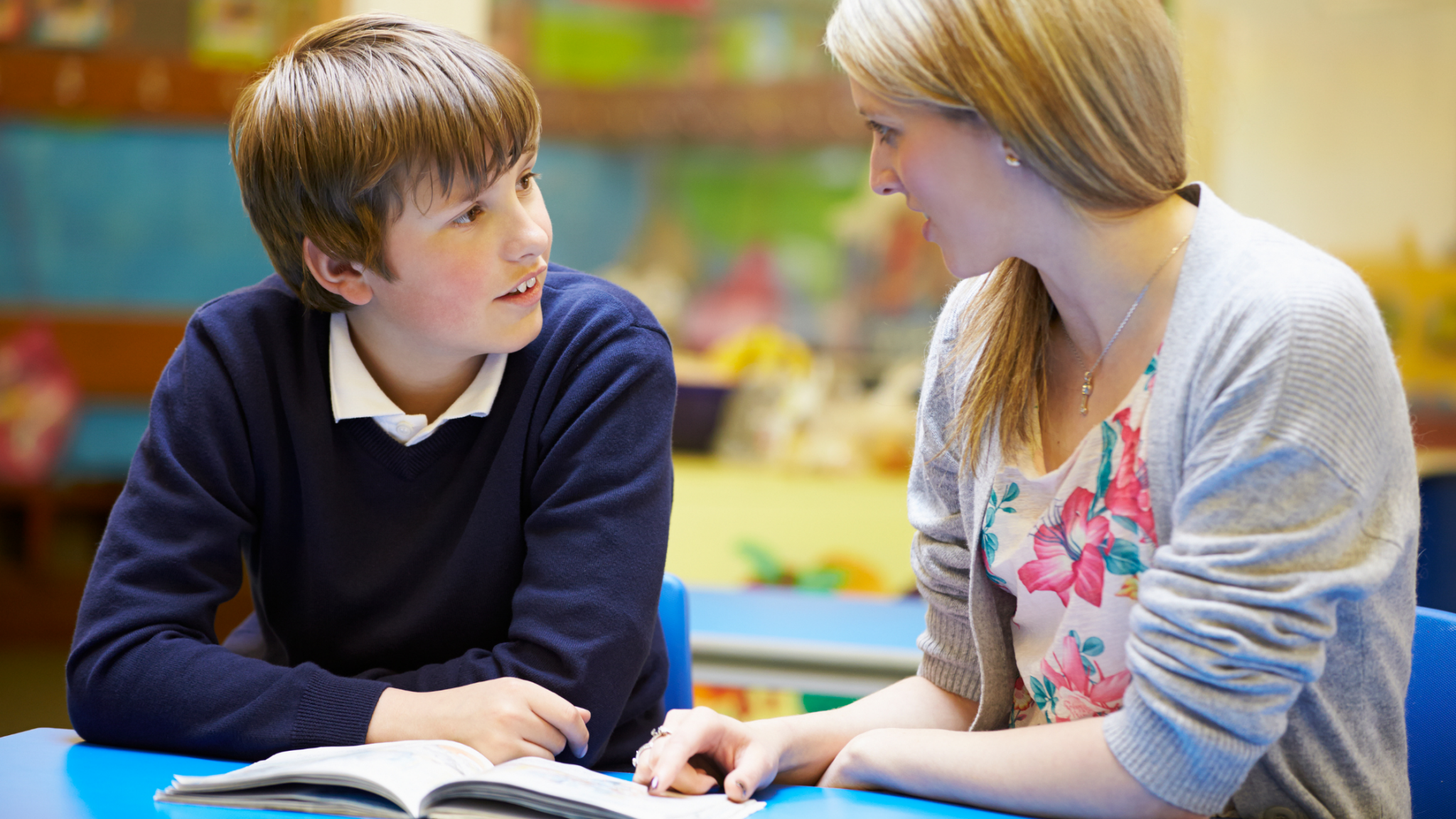If you’ve ever felt overwhelmed by the myriad of treatment options available for managing ADHD in children, you’re not alone.
While medication is often the go-to solution, many families are turning their attention towards natural strategies instead. In this article, discover natural ADHD treatments for children that focus on holistic well-being.
From dietary adjustments to lifestyle changes and supplementation, these alternative approaches aim to reduce symptoms and improve quality of life without the side effects commonly associated with medication.
What is ADHD?
Attention-Deficit/Hyperactivity Disorder, commonly known as ADHD, is a neurodevelopmental disorder that affects both children and adults, though it’s often diagnosed in early childhood.
The key symptoms include difficulty sustaining attention, hyperactivity, and impulsivity, which can manifest in various ways, such as forgetfulness, fidgeting, or acting without considering the consequences. These symptoms often lead to challenges in school, relationships, and daily activities.
While symptoms can appear as early as between the ages of 3 and 6, diagnosing ADHD in children younger than 4 is generally considered challenging and less reliable.
The Impact of ADHD on Children
ADHD poses a significant hurdle in a child’s capacity to focus and exercise self-control, markedly impacting their academic performance, social interactions, and overall self-esteem.
In the classroom, a child with ADHD may find it extremely challenging to concentrate on tasks, follow instructions, or engage in quiet, independent activities. This lack of focus can lead to poor grades and increased stress.
Socially, impulsivity may manifest in disruptive behaviors, such as talking out of turn or invading personal space, which can strain friendships and create conflict both in and outside the school setting.
These challenges often erode a child’s self-esteem. They may internalize their difficulties as personal failures, leading to feelings of inadequacy and low self-worth. All of these aspects interlink, creating a cycle that is emotionally and mentally exhausting for the child.
The Prevalence of ADHD
The prevalence of ADHD among children is not only significant but has been on the rise in recent years. According to the Centers for Disease Control and Prevention (CDC), approximately 6 million children in the United States have been diagnosed with ADHD as of 2016.
The condition affects boys more commonly than girls, with about 13% of boys receiving a diagnosis compared to 6% of girls. Age-wise, ADHD is typically diagnosed in children around the ages of 6 to 12, although symptoms can manifest earlier. Geographically, there are also variances in ADHD diagnosis rates. These statistics underscore the urgency of addressing ADHD as a pervasive issue that affects a considerable number of families across various demographic groups.
How ADHD is Diagnosed in Children

The diagnosis of ADHD in children is a comprehensive process that extends beyond simply ticking off a checklist of symptoms. Pediatricians, psychologists, or psychiatrists usually conduct a detailed evaluation that includes a variety of methods to ensure an accurate diagnosis.
The Diagnostic and Statistical Manual of Mental Disorders (DSM-5) outlines specific criteria that must be met, which includes persistent patterns of inattention and/or hyperactivity-impulsivity that interfere with daily functioning.
Generally, symptoms must be present for at least six months and in more than one setting (like home and school) to meet the criteria. Doctors often utilize various assessments, which can include parent and teacher questionnaires, one-on-one interviews, and sometimes specialized tests for attention and impulsivity.
Blood tests or brain imaging studies are generally not used for diagnosing ADHD but may be employed to rule out other medical conditions that could be causing symptoms. The goal is to paint a comprehensive picture of the child’s behavior across different settings and situations, leading to a more precise and tailored treatment plan.
10 Natural ADHD Remedies for Children
1. Nutrition
Nutrition plays a significant role in managing ADHD symptoms, and targeted dietary changes can be a game-changer for children with ADHD. Here are some key nutritional shifts that can reduce symptoms.
Nutrition Change #1: Gluten-Free Diet
Gluten, a protein found in wheat, barley, and rye, can trigger inflammatory responses in the body that in turn exacerbate ADHD symptoms. Eliminating gluten from the diet can lead to improvements in symptoms, as evidenced by various anecdotal reports and emerging research studies.
Nutrition Change #2: Dairy-Free Choices
Dairy products can cause digestive and inflammatory issues as well, potentially exacerbating ADHD symptoms. Alternatives like almond milk, coconut milk, or oat milk (certified gluten free) are better options that are easier on the digestive system. Just make sure and choose clean options with fewer ingredients and no additives.
Nutrition Change #3: Avoid Soy
Soy products can disrupt hormone levels and exacerbate ADHD symptoms. Steering clear of soy-based foods may reduce symptoms.
Nutrition Change #4: No Artificial Flavors and Colors
Artificial additives, such as food colorings and artificial flavors, have been linked to increased hyperactivity in children. Opting for natural, organic foods free from these additives can contribute to better focus and less impulsivity.
Nutrition Change #5: Reduce Sugar Intake
High sugar levels can create spikes and crashes in blood sugar, affecting mood and focus. Incorporating complex carbohydrates and fiber can help in maintaining stable blood sugar levels, consequently improving ADHD symptoms.
Nutrition Change #6: Incorporate Healthy Fats
Omega-3 and Omega-6 fatty acids, found in fish, flaxseeds, and walnuts, have been shown to improve cognitive function. These healthy fats can support brain health and potentially reduce symptoms of ADHD.
Nutrition Change #7: Choose Grass-Fed and Wild-Caught Protein
Proteins are the building blocks for neurotransmitters, which are crucial for brain function. Grass-fed meats and wild-caught fish are richer in nutrients and free from harmful hormones and antibiotics, making them a superior choice for managing ADHD symptoms.
Incorporating these nutritional changes into your child’s diet can reduce ADHD symptoms and enhance quality of life.

- Regular Exercise
It’s no secret that exercise has multiple health benefits, but its significance in managing ADHD symptoms is not always as well known. Physical activity serves as a natural outlet for hyperactivity and impulsivity, fostering an environment where children can better channel their energy and focus.
Aerobic Exercise: Boosts Cognitive Function
Engaging in aerobic activities like jogging, swimming, or cycling has shown to enhance cognitive function. These exercises boost the production of endorphins—also known as “feel-good” hormones—elevating mood and aiding in the attention and memory processes.
Strength Training: For Emotional Regulation
Activities like weightlifting or bodyweight exercises can play a role in emotional regulation, helping to combat the impulsivity often observed in children with ADHD. These activities require discipline and control, skills that are beneficial for emotional regulation as well.
Mind-Body Practices: Improve Focus
Techniques like yoga and mindfulness-based exercises improve body awareness and can lead to improved focus and concentration. These practices offer a reprieve from the chaos that ADHD can often bring, allowing children to gain better control over their thoughts and actions.
Group Activities: For Social Skills
Participation in team sports or group activities can offer the additional benefit of improving social skills. Teamwork, communication, and social interaction are fundamental aspects of group exercises, which can help children with ADHD who often struggle with social cues.
- Sleep Hygiene Practices
Sleep is not merely a luxury; it’s a necessity, particularly for children with ADHD. Lack of quality sleep exacerbates symptoms like inattention, hyperactivity, and impulsivity, making it challenging to navigate daily tasks. In contrast, a regular and restful sleep schedule can serve as an effective natural solution for managing ADHD symptoms.
When children get a good night’s sleep, their brains undergo vital processes to consolidate memory, repair neural pathways, and restore optimal brain function. Lack of sleep interferes with these essential functions, exacerbating ADHD symptoms and further affecting a child’s academic performance, emotional regulation, and social interactions.
A successful bedtime routine comprises various elements tailored to induce relaxation. This can include calming activities like reading a book, taking a warm bath, or listening to soothing music. Avoid stimulants like electronics, caffeine, or sugar close to bedtime, as they can interfere with the sleep cycle.
Maintaining a consistent bedtime and wake-up time, even on weekends, helps regulate the body’s internal clock. This ensures that your child gets adequate rest, setting the stage for improved concentration and reduced impulsivity during waking hours.
Besides sleep quantity, sleep quality is also essential. If you notice signs of disturbed sleep, such as frequent wake-ups, nightmares, or sleepwalking, consult a healthcare provider for a comprehensive sleep assessment.
Pay attention to the sleeping environment as well. A cool, dark, and quiet room is conducive to sleep. You can use blackout curtains, white noise machines, or cooling mattresses to optimize the sleep atmosphere.
By establishing a regular bedtime routine, you’re not just encouraging good sleep hygiene. You’re setting the foundation for better mental, emotional, and physical health. It’s a holistic strategy that can significantly improve ADHD symptoms, equipping your child for the challenges of the day ahead.
- Targeted Supplementation
Supplements can play a pivotal role in managing ADHD symptoms, acting as a complementary strategy alongside dietary and lifestyle changes.
Vitamins, minerals, and other natural supplements aim to fill the nutritional gaps that are often present in children with ADHD.
For example, Omega-3 fatty acids are known for their potential to improve brain function and could help in reducing symptoms of inattention or hyperactivity. Zinc, magnesium, and iron supplements have also shown promise in various studies for their role in neurotransmitter synthesis and regulation, which is crucial for focus and impulse control.
To learn more about our favorite supplements for kids with ADHD, review this article.
However, it’s essential to remember that there is no one-size-fits-all supplement that is going to “fix ADHD.” Every child is a bio-individual, unique, and therefore will need different things.
Consult a healthcare provider for proper diagnosis and supplementation guidance. This ensures that the chosen supplements are both effective and safe, targeting the specific needs of your child.
- Mindfulness
Mindfulness strategies can support children with ADHD. These techniques teach kids how to center themselves, helping them cultivate a greater awareness of their thoughts, feelings, and sensations.
By learning to focus on the present moment, children can gain better control over their impulses and reduce the frequency of distracted or inattentive episodes.
Methods such as mindful breathing, guided imagery, or even simple body scans encourage a state of focused relaxation, allowing children to navigate their often tumultuous emotional landscape with more ease.
As a result, they can better handle stress, improve social interactions, and even show enhanced performance in academic settings.
- Social Support
When you’re raising a child with ADHD, establishing a strong network of social support is crucial for both the child and the family as a whole. A compassionate and understanding community can make a world of difference in helping you navigate the daily challenges that come with ADHD.
Friends, family, and even specialized support groups can offer invaluable advice, emotional sustenance, and practical tips for managing symptoms. This social backing not only eases the emotional load on parents but also provides an affirming environment for the child.
Kids benefit from seeing that they’re not alone; that there are others who understand their struggles and triumphs. Schools and healthcare providers often offer resources or can point you in the direction of support networks.
The sharing of experiences and solutions among a community can give you renewed strength and hope, reinforcing the fact that you’re not navigating this challenging journey in isolation.
- ADHD-Specific Parenting Methods
Parenting a child who experiences ADHD-based behaviors can be really hard, but there is an effective parenting approach for children experiencing ADHD symptoms.
It’s backed up by research, theoretical frameworks and evidence informed, and many parents have witnessed the shifts for their children once they started to truly embed new parenting practices.
Ashley, our ADHD-Specific Child and Family Therapist, explains that ADHD-Specific Parenting:
✍️ Empowers parents to look below the surface of their child’s behaviors, discovering the sources of the child’s difficulties.
✍️ Holds knowledge on how nutrition, parenting, family stressors, the environment, and certain school settings can actually exacerbate ADHD symptoms.
✍️ Deepens your understanding of how your child’s nervous system contributes to their behaviors, emotions, and difficulties.
✍️ Focuses on expanding your awareness of your child’s emotional, physical and relational needs and how to respond to these vs. focusing on ‘managing’ their behaviors.
✍️ Supports your children to develop their self-regulation through your relational connection and co-soothing.
✍️ Is about growing & learning new ways of being and connecting with your child.
Parenting this way is not necessarily complicated, but it’s also not easy or simple. It takes time, commitment, and effort, lots of practice, and sometimes lots of support! It also might mean ‘retraining’ your current or ‘traditional’ parenting brain.
Check out our ADHD Thrive Jumpstart 4 Parenting Program, where Ashley shares specific tools and strategies about ADHD-specific parenting.
- Reducing Toxic Load
Environmental toxins like heavy metals and volatile organic compounds (VOCs) found in household products can contribute to neuroinflammatory responses and exacerbate ADHD symptoms.
By identifying and eliminating these sources of toxicity in cleaning products, hygiene products, etc., parents can create a living environment that supports better neurological function.
This is not just a matter of detoxification (though that is also important); it’s also about creating an environment that is less toxic to begin with so the body has a lower toxic load.
- Functional Lab Testing
Functional lab testing offers a comprehensive approach to understanding the underlying stressors that may exacerbate ADHD symptoms in children.
Unlike standard tests, which may only focus on isolated markers, functional lab tests delve deeper into a variety of biological systems. They can analyze everything from gut health to mineral imbalances, nutrient deficiencies, and more.
These detailed insights enable practitioners to create highly personalized treatment plans that go beyond symptom management, targeting the underlying stressors of ADHD symptoms.
By identifying and addressing these underlying stressors, such as inflammation or digestive issues, parasites or bacterial overgrowth, etc. parents can take strategic steps to improve their child’s mental clarity, focus, and behavioral control.
In essence, functional lab testing offers a roadmap for a more targeted and effective ADHD treatment strategy, tailored specifically to the unique needs of your child.
- Breathing for the Brain
Different breathing techniques, such as diaphragmatic breathing and rhythmic breathing, can have profound impacts on neurological functions. These techniques help in calming the nervous system, thereby improving focus and reducing hyperactivity.
By guiding more oxygen to the brain, children can experience heightened mental clarity and a greater ability to control impulsive behaviors. This increased flow of oxygen can activate the parasympathetic nervous system, which fosters a state of calm and relaxation.

The Role of Parents and Teachers in Managing ADHD Naturally
Managing ADHD is a collective effort that heavily involves both parents and teachers. Together, they can employ several effective strategies to help children thrive.
Create Structure:
Regular routines – both at home and at school – instill a sense of predictability, making it easier for children with ADHD to know what is expected of them.
Maintain Clear Expectations and Rules:
Children (especially children with ADHD) benefit from clear, simple guidelines that are consistently enforced. This sets the stage for appropriate behavior and helps them understand the parameters within which they should operate.
Encourage Healthy Lifestyle Choices:
A balanced diet, consistent physical activity, and adequate sleep can all contribute to the alleviation of ADHD symptoms. Parents and teachers can model and promote these healthy behaviors.
Provide Positive Reinforcement:
Using praise, extra privileges, or small rewards as incentives can be a highly effective way to reinforce desired behavior. This often proves to be more impactful than punitive measures.
Help with Organization:
Children with ADHD typically struggle with organizational skills. Providing tools like planners and charts and teaching them how to use these tools can significantly improve their ability to manage tasks.
Teach Time Management Skills:
Breaking down tasks into manageable segments and using timers can help children understand the importance of allocating time wisely. Providing regular breaks can also help maintain focus.
Provide a Calm and Quiet Place to Work:
A distraction-free environment is crucial for enhancing concentration. Both at home and in the classroom, children with ADHD benefit from a calm, quiet space.
Promote Social Interaction:
Encourage participation in activities that can build social skills and self-esteem, which are often areas of difficulty for children with ADHD.
Work Together with Healthcare Professionals:
Maintaining open lines of communication with healthcare providers ensures that the child’s treatment plan is both followed and adaptable to their evolving needs.
Advocate for the Child’s Needs:
Whether it’s working on an Individualized Education Program (IEP) or a 504 plan, parents and teachers need to advocate for accommodations that address the child’s unique needs in the educational setting.
By adopting these strategies, parents and teachers can turn the challenges of ADHD into opportunities for growth and development.
How to Get Started With Natural ADHD Treatment
Understanding where to start in the natural journey can be overwhelming.
Should you start with supplements or dietary changes or exercise? All of the above? There’s so much information out there that it’s challenging to know where to begin.
That’s why we’ve crafted a comprehensive ADHD Masterclass that outlines actionable strategies for natural management of ADHD symptoms.
Take the first step towards a better tomorrow by watching the ADHD Masterclass today.







